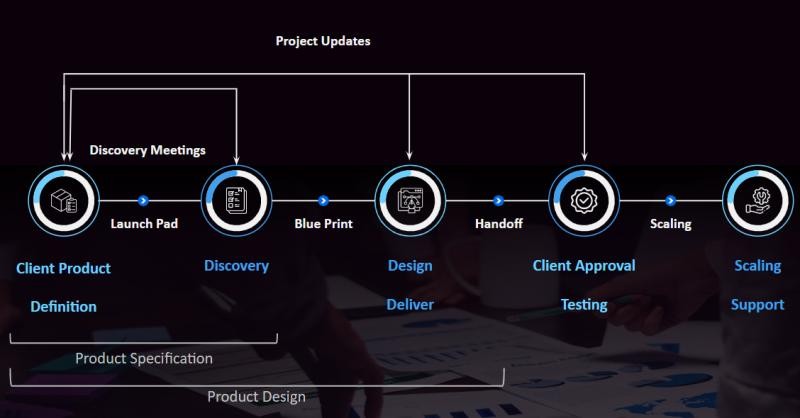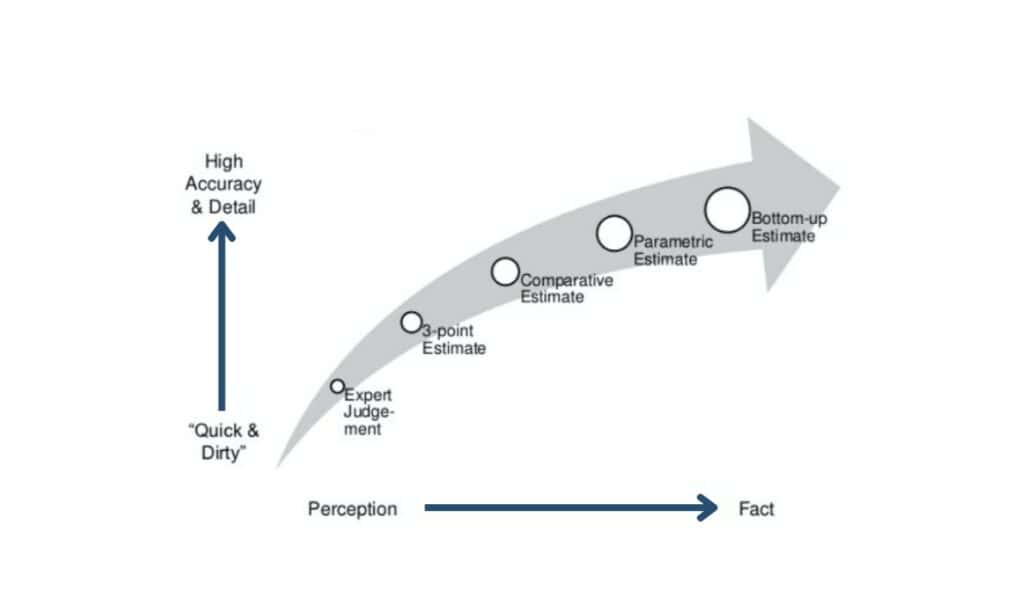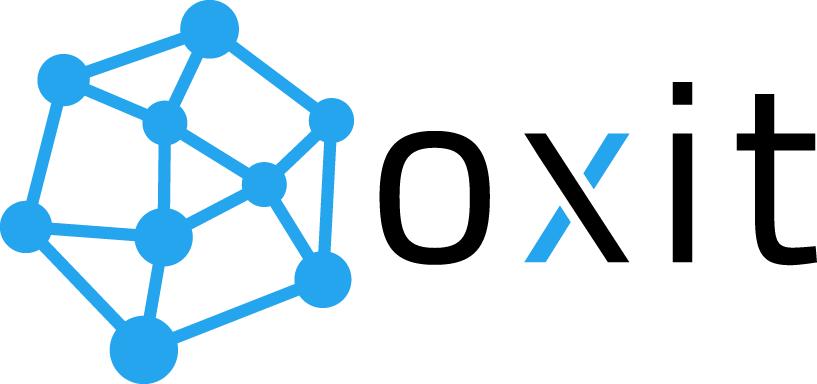Get a GRIP on your Timelines and Budget
Over the last decade and 500,000 hours of engineering, Oxit has refined a process that delivers more accurate estimates and timelines, overcoming the challenges and lessons learned along the way.
Project Updates Workflow
Oxit’s proven process ensures seamless transitions from ideation to scaling. The roadmap, shown below, highlights critical phases of an IoT project—each designed to maintain alignment and meet client expectations.

Keeping an IoT development project on time and within budget is no small feat. However, with the right strategies and practices, success is achievable. Below, we explore the steps Oxit employs to manage IoT development projects efficiently and effectively.
Step 1: Define What Needs to Be Accomplished
The first step to solving any problem is understanding and clearly defining it. Focus on what you are trying to achieve rather than jumping prematurely into how to achieve it.
Product Specification and Objective Setting
- Gather Insights: Brainstorm with your team to identify objectives, goals, and future product plans.
- Refine the List: Discuss the importance of each idea, considering timelines, budgets, and business impacts.
- Define Clear Objectives: Lay out scope, constraints, and achievable outcomes in collaboration with subject matter experts.
- Establish System-Level Specifications: Identify sub-systems, interfaces, and functional specifications.
This phase provides a long-term vision and ensures features align with stretch goals while keeping budget considerations in check.
Step 2: Choose the Right Estimation Method
Estimating project timelines and budgets requires precision and adaptability. As seen in the image below, Oxit leverages methods ranging from expert judgment to detailed bottom-up estimates, depending on the project’s complexity and requirements.

Selecting the appropriate estimation method ensures that resources are allocated effectively and that the project remains on track.
Step 3: Develop a Detailed Project Plan
A solid project plan outlines tasks, timelines, and dependencies while allowing for potential delays or unforeseen challenges.
- Break Down Objectives: Divide them into manageable tasks.
- Engage Teams: Collaborate with project managers and team members to set realistic deadlines.
- Utilize Tools: Leverage project management platforms to track and organize progress.
Step 4: Design for Scalability and Security
IoT projects often grow over time. Designing solutions with scalability ensures your product can adapt to future needs while maintaining robust security and compliance measures from the outset.
- Plan for Expansion: Incorporate flexibility for future updates and tool integration.
- Prioritize Security: Implement strong measures and ensure compliance with regional regulations to avoid costly setbacks.
A Word from Oxit’s CEO
Oxit CEO Josh Cox emphasizes the complexities of IoT development, stating:

This sentiment highlights the importance of partnering with experts like Oxit to navigate challenges and avoid costly pitfalls.
Step 5: Build, Test, and Iterate
IoT projects require thorough prototyping, testing, and optimization.
- Prototype Development: Create and refine prototypes to detect potential issues early.
- Comprehensive Testing: Simulate real-world conditions to ensure reliability.
- Monitor and Optimize: Use data analytics to identify areas for improvement and ensure the product meets specifications.
Step 6: Transition to Deployment and Maintenance
After testing, transition your prototype into a finalized product, prepared for scaling and ongoing support.
- Manufacturing and Scaling: Plan manufacturing processes, whether in-house or through a contract manufacturer.
- Post-Launch Support: Budget for updates, security patches, and ongoing maintenance to ensure long-term success.
Essential Checklist for Accurate Estimates and Timelines
- Performance requirements
- System and functional specifications
- Subsystem identification and interfaces
- Budget allocation and task definition
- Preliminary bill of materials
- Multiverse project simulation
Conclusion: The Oxit Advantage
IoT development projects hold immense potential but require careful planning, skilled teamwork, and continuous improvement. With over a decade of expertise, Oxit has mastered the process of turning complex challenges into scalable, secure, and cost-effective IoT solutions.
Our Design Accelerator Service offers clarity on project timelines and budgets, eliminating surprises and ensuring success. Contact us to learn how Oxit can help transform your IoT vision into reality.



